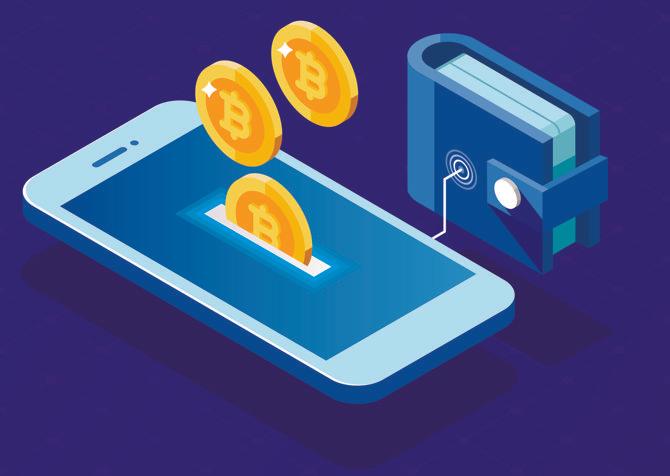Cold Crypto Wallets: The Smart Way to Keep Your Digital Assets Safe in 2025

Cryptocurrency has come a long way from being an experimental technology. It’s now an integral part of modern investing, wealth preservation, and even daily transactions. But with increased adoption comes increased risk—hacks, phishing scams, and exchange failures have become all too common. For long-term crypto holders, one essential tool offers protection from these threats: the cold crypto wallet.
In 2025, knowing how to properly store your assets is as important as knowing what to invest in. Let’s explore what cold wallets are, how they work, and why they remain the gold standard for crypto security.
Why Cold Storage Still Matters in 2025
Despite advances in cybersecurity, storing digital assets online always carries risk. Hot wallets (wallets connected to the internet) are convenient for fast transactions, but they’re vulnerable to:
- Hacking attempts
- Malware or spyware
- Phishing scams
- Exchange collapses
- Insider breaches
A cold crypto wallet, by contrast, stores your private keys entirely offline. This means your access to funds is physically disconnected from the internet—out of reach of online attackers. For anyone serious about crypto security, cold storage is not optional; it’s essential.
What Exactly Is a Cold Crypto Wallet?
A cold crypto wallet is any wallet that stores your private keys offline. Unlike hot wallets or exchange wallets, cold wallets never expose your keys to the internet unless you intentionally connect them (and even then, often with added security layers).
There are different types of cold wallets, each with their own strengths. Some are simple and affordable; others are packed with features for advanced users. What they all have in common is enhanced security.
Main Types of Cold Crypto Wallets
1. Hardware Wallets
Hardware wallets are physical devices—often resembling USB sticks—that store your keys offline. You connect them only when you need to sign a transaction. Popular models include:
- Ledger Nano X
- Trezor Model T
- Keystone Pro
These devices are ideal for daily or occasional use without sacrificing security. Many also support a wide range of cryptocurrencies.
2. Air-Gapped Wallets
Air-gapped wallets are never connected to the internet at all. They use QR codes, cameras, or microSD cards to handle transactions without exposing the private key to any networked device.
Air-gapped devices are popular among security professionals or those storing large amounts of crypto for the long term.
3. Paper Wallets
A paper wallet is simply a printed version of your public and private keys. While extremely low-tech, this is a form of cold storage as long as it remains offline. However, it comes with drawbacks like physical wear, theft risk, and lack of user-friendliness.
Why Choose a Cold Crypto Wallet?
Long-Term Asset Protection
If you’re not actively trading your coins, you don’t need them online. A cold crypto wallet is perfect for holding assets over years or decades, offering maximum protection from online threats.
Protection from Exchange Failures
Even in 2025, exchanges can still fail or get hacked. When you keep your assets in a cold wallet, you’re not relying on any third party to access your funds.
True Ownership and Privacy
With a cold wallet, you’re in control. You hold the keys, not an exchange or custodial service. This aligns perfectly with the ethos of crypto: decentralization and financial sovereignty.
How to Use a Cold Crypto Wallet Securely
Step 1: Buy Directly from the Manufacturer
Avoid secondhand sellers or marketplaces that may have tampered with the device.
Step 2: Set It Up Offline
Never use internet-connected devices to generate your private keys or recovery phrase.
Step 3: Store the Recovery Phrase Safely
Write it down on paper or a metal backup and store it in a safe, offline location. Never take a photo or upload it to the cloud.
Step 4: Regularly Update Firmware
Most reputable cold wallet providers issue security updates. Check for them periodically, even if you’re not using the device every day.
Step 5: Use with Caution
Only connect your wallet to trusted computers, and always verify the destination address before signing a transaction.
What to Look for When Choosing a Cold Wallet
Here are some essential features the best cold crypto wallet should have:
- Secure chip (for hardware wallets)
- Support for multiple cryptocurrencies
- Passphrase and PIN protection
- Clear user interface
- Regular firmware updates
- Open-source code (ideally)
For many users, a hardware wallet offers the best balance of usability and security. However, for those prioritizing complete isolation, air-gapped wallets are the top choice.
Common Mistakes to Avoid
Even the best cold wallet won’t help if it’s used incorrectly. Avoid these pitfalls:
- Storing your seed phrase on your phone or computer
- Buying wallets from unofficial sources
- Leaving the wallet connected to a computer when not in use
- Sharing wallet details online or in public forums
Security is a mindset. Your cold crypto wallet is only as secure as your personal habits allow it to be.
Is a Cold Crypto Wallet Right for You?
If you plan to:
- HODL for the long term
- Accumulate large crypto holdings
- Avoid dependence on centralized exchanges
- Take ownership of your financial privacy
Then yes—a cold crypto wallet is exactly what you need.
For active traders or those frequently moving funds, a hybrid model may work: use a hot wallet for small transactions and keep the bulk of your assets secured offline.
Final Thoughts
Crypto has evolved, but the threats haven’t gone away—they’ve just become more subtle. If you’re serious about protecting your digital wealth, investing in a cold crypto wallet is one of the smartest decisions you can make in 2025.
Offline storage may seem like a small detail, but it’s the detail that determines whether you truly own your crypto—or just have access to it until something goes wrong.
Self-custody isn’t just an option in the crypto world. It’s the foundation.



